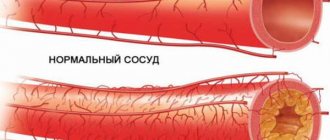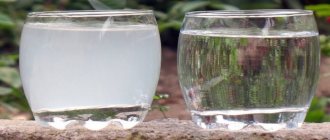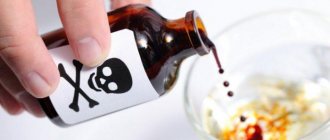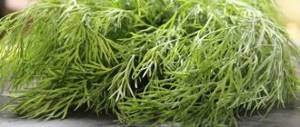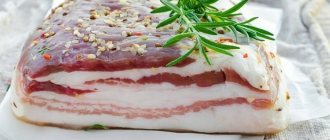Teflon has become so firmly established in our daily lives that not a single housewife can imagine a kitchen without a Teflon-coated frying pan or pan. It's so convenient! Food does not burn even with minimal use of oil. However, not everyone knows about the harm that Teflon causes to our body.
Where is Teflon used?
Now the material is used in the manufacture of household products, including kitchen utensils. The substance is applied to the metal surface of the cookware, thereby ensuring its uniform heating.
Teflon is applied to the metal surface of the cookware, thereby ensuring uniform heating.
It is often used for the production of pipes of different sizes, as it is characterized by a high level of thermal conductivity. Teflon solution is used as an impregnation for many types of fabric. The raw materials have characteristic water-repellent properties, which is very important when sewing specialized clothing.
Description
A Teflon frying pan is a metal utensil with a special non-stick coating. The coating of the Teflon frying pan itself is what makes such a purchase so valuable. Thanks to its features, food does not burn, oil consumption is reduced to a minimum, which in itself makes food healthier.
However, if you compare a Teflon-coated frying pan and ceramic cookware, the latter will win in terms of environmental friendliness. The fact is that if you damage the Teflon while cooking, toxic substances may be released when the coating is heated. Of course, the developers took care of this and began to make the dishes strong and protected from damage, but minimal risks remain.
What is Teflon? Its chemical properties are similar to plastic, but it is more elastic and glides better. Teflon is used in various fields - in the manufacture of paper products, plastic packaging, clothing.
Teflon frying pans have an important advantage - they are lighter in weight than ceramic ones and, of course, lighter than cast iron ones.
What harm does Teflon have on humans?
Disputes about the negative impact of Teflon coating on frying pans on human health have been going on for several years now. Most experts claim that the material has a negative effect on the functioning of the heart, liver and other internal organs. It also provokes the development of cancerous tumors and infertility.
The toxicity of tetrafluoroethylene has become a myth, but this only applies to trusted companies.
Due to numerous studies, the toxicity of tetrafluoroethylene has become a myth. However, this only applies to verified companies. Do not forget that there are many companies on the market that use Teflon of dubious quality.
The dangers of Teflon on kitchen utensils
The opinion that the chemical is hazardous to health is controversial. Some say that the Teflon coating of a frying pan is absolutely harmless, while others, on the contrary, are sure that it is completely unsuitable as a protective layer for dishes. Why are there such disagreements and how to find that golden mean?
The Teflon layer is fragile and does not tolerate exposure to metal cutlery.
Everything is much simpler than you think. Kitchen utensils coated with tetrafluoroethylene will not cause harm if used correctly. The Teflon layer is fragile and does not tolerate exposure to metal cutlery. After all, due to the appearance of scratches, the functionality of the vessel is reduced to a minimum.
Why are Teflon vapors harmful?
By damaging the inner walls of the pan, microcracks form. When the frying pan heats up, damage to the frying pan makes itself known. Through small chips, toxic tetrafluoroethylene vapors are released, which in the long term cause the appearance of malignant tumors.
When purchasing such products, read the operating instructions. Follow the prescribed procedure for care and use, then you will have no reason to worry.
How to avoid Teflon poisoning
It is unlikely that you will be able to stop using a Teflon frying pan, given its well-founded advantages and uniqueness. However, you should not neglect safety precautions during operation.
- Do not heat containers with Teflon surfaces before adding vegetable oil. In a heated frying pan, the material reacts chemically with the oil and releases dangerous fumes.
- Avoid using metal scrapers or spatulas. They can easily damage the internal structure of the frying pan.
- When choosing a suitable product, focus on its components. These should not include PTFE.
Do not heat containers with Teflon surfaces before adding vegetable oil.
If you take into account all the above recommendations, then the risk of intoxication and purchasing a low-quality product is reduced to zero.
Therefore, it is necessary to initially become familiar with the features and characteristics of such dishes.
Negatives in non-stick substance
Over the years, controversy surrounding Teflon has not subsided. On one side of the conflict are manufacturers who claim that the negative impact on humans is negligible. On the other hand, there are ecologists and independent scientists who say the opposite.
Read also Titanium dioxide: dye E171 in cosmetology and cooking
Is non-stick coating harmful or not - this debate is considered to be unresolved. In itself, the substance from which Teflon is synthesized does not combine with any chemical elements. After years of research, it was considered safe even at up to a quarter of the amount in food.
American scientists from the state of California began to dispel this theory. During observations of pregnant women from Denmark, a blood test of one of them revealed the presence of perfluorocarbons there. Soon tests showed a similar deviation in many women. This suggested that perfluorooctanoic acid from the Teflon cookware they used was accumulating in the body. This caused a negative reaction from experts from the World Health Organization and independent scientists.
Scientific experiments with animals have confirmed that Teflon coating is harmful to health. The biliary system, especially the liver, hormonal and reproductive systems, reacts extremely painfully to the accumulation of perfluorooctanoic acid (PFOA). The fetus is exposed to poisoning during pregnancy. Studies have shown that women with PFOA levels remained infertile and even in vitro fertilization was unsuccessful.
Constant companions of such poisoning have become immune and cancer diseases, obesity. Among patients with diabetes mellitus, there were a large number of patients with elevated levels of this acid. The incidence of leukemia, prostate cancer and female reproductive system cancer is also increasing.
Public organizations were the first to become alarmed. The American Environmental Working Group, after its own research, contacted the US Government Department of Environmental Protection (EPA) and achieved recognition of Teflon as dangerous to life and health. In turn, this department issued a demand to manufacturers of Teflon cookware to reduce its production by ninety-five percent by 2010, and to stop completely from 2020. However, this requirement has not yet been met. The DuPont company reported that despite the search for an analogue of a non-stick coating with such properties, there is nothing to replace Teflon.
Where the danger lurks
Most consumers willingly purchase and use Teflon-coated cookware. It is very convenient to use. Manufacturers unanimously assure that if the rules of use and cleaning are followed, the polymer in such household items is inert. Teflon coating is relatively safe if the following conditions are met:
- The dishes do not heat up above two hundred and thirty degrees.
- The coating does not have even the slightest damage.
- A microscopic scratch on dishes can lead to dire consequences.
Read also Why you shouldn’t chew gum: harm and benefits for humans
Perfluorooctanoic acid accumulated in the body is not removed from it and provokes fatal reactions. Most often, a coating of such material is found on dishes like this:
- Frying pans of various sizes.
- Bowls of multicookers, pressure cookers, bread makers.
- All kinds of pots and pans.
The working surfaces of pancake makers, waffle irons, and toasters are often coated with a dangerous polymer. There are even Teflon-coated rolling pins.
Beware of Teflon fumes
The fumes from such a coating are extremely toxic and can cause dizziness and nausea. When cooking, it is necessary to turn on all available ventilation systems and the window should be open, providing fresh air circulation. Human lungs suffer from fumes. The damage from vapors will not disappear even when you finish cooking using such utensils. Polymer particles settle and are absorbed into furniture, wall coverings, and clothing, continuing their dangerous effect. The cracked layer allows microparticles to enter the food.
Restoration of fireproof layers
Very often throughout the country there are proposals to quickly and inexpensively restore the effectiveness of cookware with a non-stick coating. But whether such a procedure is real is difficult to believe. The process of synthesizing Teflon and applying it to any surface requires the use of high-tech equipment and special raw materials and reagents. Therefore, such offers are most likely a common scam. A stingy person pays twice: first, money is spent on trying to coat old dishes with Teflon, then on health.
On the Internet you can find the following advice:
- Use a cleaning disc to remove the coating from the dishes.
- Polish it until it sparkles.
This will supposedly allow you to use such utensils for some time. However, such equipment should not be used even for storing food. Cooking is out of the question.
Is it possible to restore the Teflon coating yourself?
The polymer layer on the dishes is not easy to restore, especially if the operating rules were not followed. If you purchased Teflon cast iron pans and over time they have lost their non-stick properties. We recommend using the following recovery algorithm:
- Heat a cast iron pan on the cooktop for seven minutes.
- Sprinkle the bottom with salt so that there are no gaps.
- Make sure that the salt does not burn. Stir the salt powder from time to time.
- Add salt and rinse the pan under running water. Wipe the product dry.
- Place the pan back on the stove and fill the inside with oil.
- Drain the oil. Clean the pan again and boil water in it.
The final stage of restoring Teflon in a frying pan will be to lubricate the walls with a thin layer of vegetable oil and then heat it in the oven.
To remove complex contaminants, manipulations must be carried out several times to completely get rid of traces of soot.
The final stage of restoring Teflon in a frying pan will be to lubricate the walls with a thin layer of vegetable oil and then heat it in the oven. This way you can restore the non-stick layer.
What is a suitable replacement?
While some are debating the dangers of Teflon coating, others are looking for a way to replace such utensils with similar, less harmful ones with minimal inconvenience. This can be purchased in stores, and its safety has been proven over years of trouble-free use.
Read also Domestic gas in the house: what is the danger of a leak, help with suffocation
Cast iron utensils
Such utensils will easily perform all the same processes as Teflon ones, but without harm to health. Many housewives may complain about the difficulty of caring for such pans and pots. However, immediately after use, rinse them in running water, dry them and apply a thin layer of fat, and the problem will be solved. Food does not stick to a well-heated cast iron frying pan. In addition, carbon deposits formed over years of use serve as a kind of protection against burning.
With its strength, cast iron will outperform any Teflon coating. Such dishes last for decades and have no expiration date, which is financially beneficial. Due to its thickness, it has good thermal conductivity and heating spreads evenly over the entire area of the object. Dishes cooked in cast iron cookware turn out tasty, fluffy, browned, and evenly cooked. This is an excellent cookware option for cooking in the oven.
Ceramic kitchen utensils
Ceramic coated cookware is a good replacement for Teflon. Ceramics are environmentally friendly and, when heated, do not emit toxins. Even in a very hot frying pan, food does not stick to this coating. The only and rather significant drawback is the short service life of such items. They deform and wear out faster than Teflon ones. Regardless of the quality of production, ceramic products can withstand just over a hundred cooking cycles. Although environmentally friendly, pieces of ceramic may end up in your food, which can cause health problems.
Despite all the advantages of modern Teflon and products using it, the harm caused to human health is certainly much higher. That is why the largest cookware manufacturers are looking for a harmless alternative to this material. Until this happens, it is better to return to the use of proven materials for products that have an effect on the human body.
How to choose a Teflon frying pan: weight, bottom thickness, handle type, coating without damage
In the process of choosing polytetrafluoroethylene cookware, attention is paid to many criteria - production raw materials, weight, design, etc. First of all, focus on the material from which the frying pan is made: cast iron, copper or stainless steel. The technical characteristics and weight of the product depend on the raw materials. As a rule, cast iron is considered the heaviest, then steel and only then copper. As for the thickness of the bottom, it depends on the functional purpose of the kitchen utensils. If you want to buy a pancake maker, then don’t expect a massive thick bottom, which cannot be said about a wok.
The market is replete with many designer tableware models.
The market is replete with many designer tableware models. Pans are characterized by handles. They come in three types: molded, folding and removable. Each of them is unique and convenient in its own way. The choice depends on the individual preferences of the consumer.
Basic properties
An American scientist first learned about the substance in the 20th century. It was he who patented the trademark Teflon. In fact, fluoroplastic is used. Teflon is considered a type of plastic; it can withstand fairly high temperatures and begins to melt after +270 degrees Celsius. The substance is not afraid of the effects of alkalis and acids.
Please note that Teflon is used not only for making tableware. It is used in the automotive and electronics industries. In addition, fluoroplastic is used for medical implants.
The most popular brands of Teflon pans
Despite the skeptical attitude of specialists towards polymer-coated products, manufacturers do not stop releasing them onto the market. The quality and reliability of such utensils are guaranteed by the following items:
- TVS Basilico - does not contain hazardous chemical elements in its structure, heats up quickly and is comfortable to use.
TVS Basilico – does not contain hazardous chemical elements in its structure
- Tefal Extra is a model with a visible heat indicator and a secure handle. Easy to clean.
Tefal Extra is a model with a visible heat indicator and a secure handle.
- Paderno – suitable for use on any hob, cleanable in a dishwasher. It is also equipped with a plastic holder that is not exposed to high temperatures.
The frying pan is equipped with a plastic holder that is resistant to high temperatures.
- Rondell Flamme is a thick-walled model suitable for all types of slabs. Resistant to various types of damage.
Resistant to various types of damage.
The above product options have been in demand among buyers for several years. Each of them can last at least five years with proper care.
Video about the properties of a stone-coated frying pan
If we talk about the chemical structure of Teflon, it is very complex. It is known that this product consists of many toxic substances, which, after heating the surface, easily enter the air, as well as food. The more often a person heats a Teflon frying pan to a high enough temperature, the faster the coating cracks, causing small volatile Teflon substances to enter the air and then into the human body.
Teflon manufacturers today pay any compensation to people affected by the toxicity of this product. Among the largest manufacturers of the substance presented is DuPont, which annually spends about $100 million on such compensation. Based on the above, we can come to the conclusion that the time has come to return to traditional frying pans with ceramic (environmentally friendly) coating.
- Among the distinctive features of cookware with stone and ceramic coatings are the following:
- Absolute safety for human health;
- Excellent non-stick qualities;
- Saving energy and time during cooking;
- Ability to safely fry at high temperatures;
- Easy to care for.
How to care for a Teflon frying pan
To maintain a presentable appearance, Teflon utensils must be cleaned not only from the inside, but also from the outside. After all, fat often accumulates on the outer walls, which later becomes carbon deposits. It is recommended to eliminate the problem of contamination “in the bud” so that you do not have to buy specialized cleaning products.
The household chemicals market offers consumers a wide range of powder, gel and water emulsions for removing grease stains. The consumer decides independently which product to buy.
How to clean a Teflon frying pan
You can wash tetrafluoroethylene utensils using improvised means or substances of chemical origin. The main thing is not to use abrasive powders or metal scrapers when cleaning so as not to damage the structure.
Contaminants must be removed immediately after cooking.
Qualified specialists recommend using store-bought emulsions and sprays once a week. Daily care includes using a solution of soda or a crumb of laundry soap. Contaminants must be removed immediately after cooking.
Stirring food in a Teflon-coated frying pan
When preparing various dishes, you cannot do without a spatula, because pieces of meat or fish fillet must be turned over for high-quality frying. How to avoid microcracks? It's very easy to do!
Do not use metal spatulas, knives or tongs when cooking.
Do not use metal spatulas, knives or tongs when cooking. They can easily scratch the bottom and walls of the vessel. An alternative to such cutlery will be silicone accessories.
Cooling the pan
Most consumers are accustomed to cooling pans under running cold water. This cooling method is strictly prohibited from being used with Teflon devices. They are not resistant to sudden temperature changes.
It is recommended to slowly lower the temperature on the hob and then turn it off.
It is recommended to slowly lower the temperature on the hob and then turn it off. During sudden temperature changes, the polymer layer releases harmful substances that negatively affect human health.
Other operating features
Despite the non-standard cooling of such utensils, there are several more characteristic features in its use. As mentioned earlier, a sharp drop in temperature has a detrimental effect on the functionality of the vessel. It’s the same story with a sharp increase in temperature. The pan simply decomposes and becomes unusable.
Do not neglect using oil in Teflon containers.
Do not neglect using oil in Teflon containers. Even the most reliable model will not last long without the use of vegetable fats in cooking.
Safety
Some people cannot completely eliminate Teflon coating from their lives, and they need to know how to use such utensils without harm to their health. For the most harmless use of such utensils, there are a number of rules that must be followed:
- The cooking process should be carried out using soft spatulas or spoons, as a metal tool can damage the surface, resulting in harmful substances getting into the food.
- A frying pan or other utensils whose surface is damaged requires immediate replacement and disposal - you cannot cook with such utensils.
- When using Teflon coating, you must strictly observe the temperature regime - this way you will avoid overheating and protect yourself and your loved ones from poisoning.
- Cleaning this cookware should also be done with caution - under no circumstances should you use an iron sponge or chemicals that can even slightly damage the surface.
By following simple rules, a person increases his own safety and reduces the risk of serious plastic poisoning. Only a responsible approach will ensure a simple cooking process and a quiet life without unpleasant symptoms.
Conclusion: differences between Teflon and ceramic frying pans
- Ceramic cookware is closer in properties to traditional cast iron frying pans. You can simmer or stew dishes in them for a long time, bringing them to perfect condition. They are also suitable for frying meat to make it juicy. This type of model becomes a universal frying pan in the kitchen for different family dishes.
- Food burns stronger and faster on Teflon than on ceramics. It requires oil during cooking, but this results in a delicious, crispy crust. This frying pan is suitable for quick frying, but not for long simmering over high heat. Differences in taste are obvious, so those dishes that turn out well on ceramic frying pans do not always turn out on Teflon.
- Another important point is cost. There is a huge variety of Teflon frying pans available on the market in the budget segment. Ceramics are more expensive products, but also of quite high quality. Both heavy and light frying pans are sure to come in handy in the kitchen, so it’s worth considering different options.
In the following articles, our experts tell you how to choose a frying pan for pancakes, the secrets of choosing a high-quality frying pan, compare the material of frying pans - aluminum or cast iron, and analyze the best manufacturers of frying pans.
Attention! This material is the subjective opinion of the authors of the project and is not a guide to purchase.
Aluminum cookware
+ Cookware made from aluminum alloys is the cheapest. Aluminum conducts heat well, and food cooks very quickly in such pans. Aluminum prevents milk and cereals from burning.
— Easily deformed and loses its presentation. Not suitable for preparing sour and salty foods - aluminum reacts with acid and forms compounds that are harmful to health in large quantities. Cooked food should not be stored in aluminum containers.
The evolution of the pan: from a clay pot to nanoceramics>>>
Service life and operating rules
Typically, the service life of Teflon pans is 5 years. And if the coating is damaged, then this period reaches a maximum of 2 years, and even then it is unsafe. In order for the frying pan to be used for as long as possible, it is necessary to properly care for it.
Here are some rules of care:
- apply at temperatures not exceeding 200 degrees;
- pour oil onto a cold surface;
- Do not wash a hot frying pan with cold water;
- do not use metal objects;
- large seasonings and salt can scratch the coating;
- Do not clean with chemical abrasives.
It is advised to keep the pan away from metal parts to minimize injury.
How to clean a Teflon frying pan
Cleaning the non-stick coating is very simple: using a soft sponge and dishwashing detergent. It is important to remove food from it immediately after cooking so that nothing gets absorbed or burns.
Cleaning a Teflon pan.
Ceramic coating
+ Heats quickly and evenly, withstands heat up to 450°C, maintaining excellent non-stick properties. Reduces cooking time and improves the quality of prepared dishes. Neutral towards all types of products. Does not peel off and is abrasion resistant. The dishes are safe for human health.
- High price. It may become cracked due to temperature fluctuations or shocks.
What to buy instead of a Teflon frying pan?>>>
Stainless steel
+ Utensils made from an alloy of iron with chromium and nickel are the most durable and safe. It cannot be scratched and chipping is impossible. Modern stainless steel cookware has a layered heat-accumulating bottom, which makes heating even and avoids burning. The thickness of the walls of the cookware must be at least 0.5 mm. The best consumer properties are for products with a wall thickness of 0.6-1.0 mm. Easy to clean with any detergent.
— It is better not to keep salt solutions in such dishes for a long time - dark rainbow stains may appear on the walls (they are removed with a 4.5% solution of vinegar or citric acid). It fades with prolonged use.
How to choose high-quality stainless steel cookware?>>>
Fireproof glass
+ The most environmentally friendly dishes - they do not react with the food being prepared, are not afraid of acids, alkalis and salt, and scale does not appear in them. Safe for human health. Can be used for electric and gas stoves, microwave ovens. Capable of withstanding temperatures from 40°C to 300°C. Using caution, you can clean with any means.
- Limited safety margin. Fireproof cookware should not be placed on a stove with an open spiral; it is also not recommended to use rectangular and oval heat-resistant pans and trays on the stove. May crack due to temperature changes or uneven heating. Do not subject it to strong mechanical shocks, otherwise it may break into sharp, dangerous pieces.
| Infographics by Yana Laikova |
What dishes can be safely used in the microwave>>>
